GermaNet is a wordnet for German
A wordnet groups synonyms into synsets and represents relations between synsets. The hypernym relation forms a hierarchical graph structure.
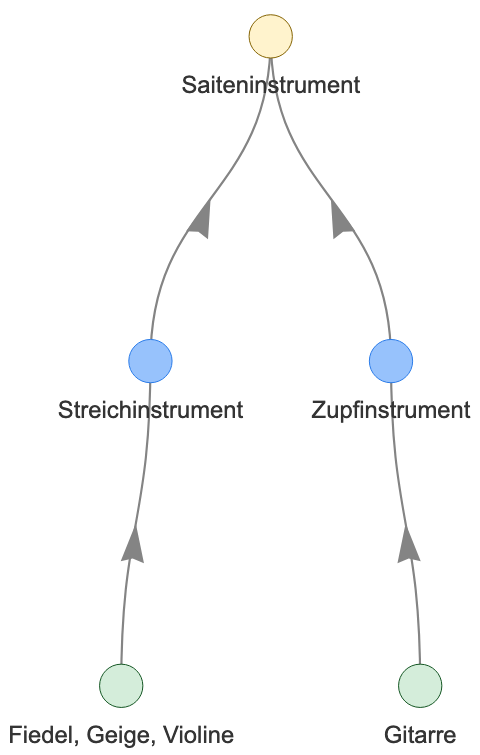
Marie Hinrichs, Richard Lawrence, Erhard Hinrichs
5 October 2020
A wordnet groups synonyms into synsets and represents relations between synsets. The hypernym relation forms a hierarchical graph structure.

Rover displays the data in GermaNet in an interactive interface designed for researchers. It offers:
Rover supports advanced searches for synsets:
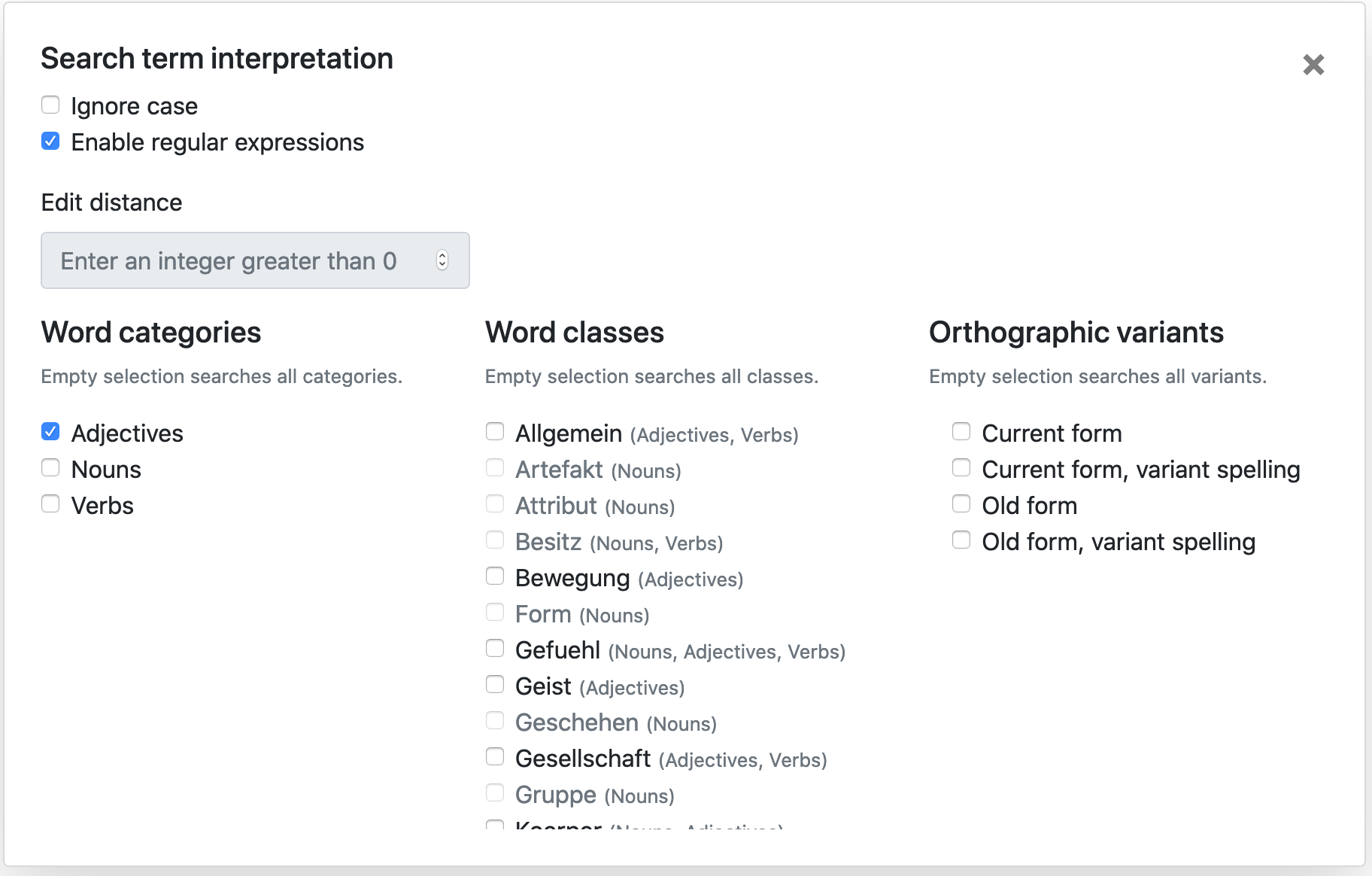
A summary of each synset in the search results includes:
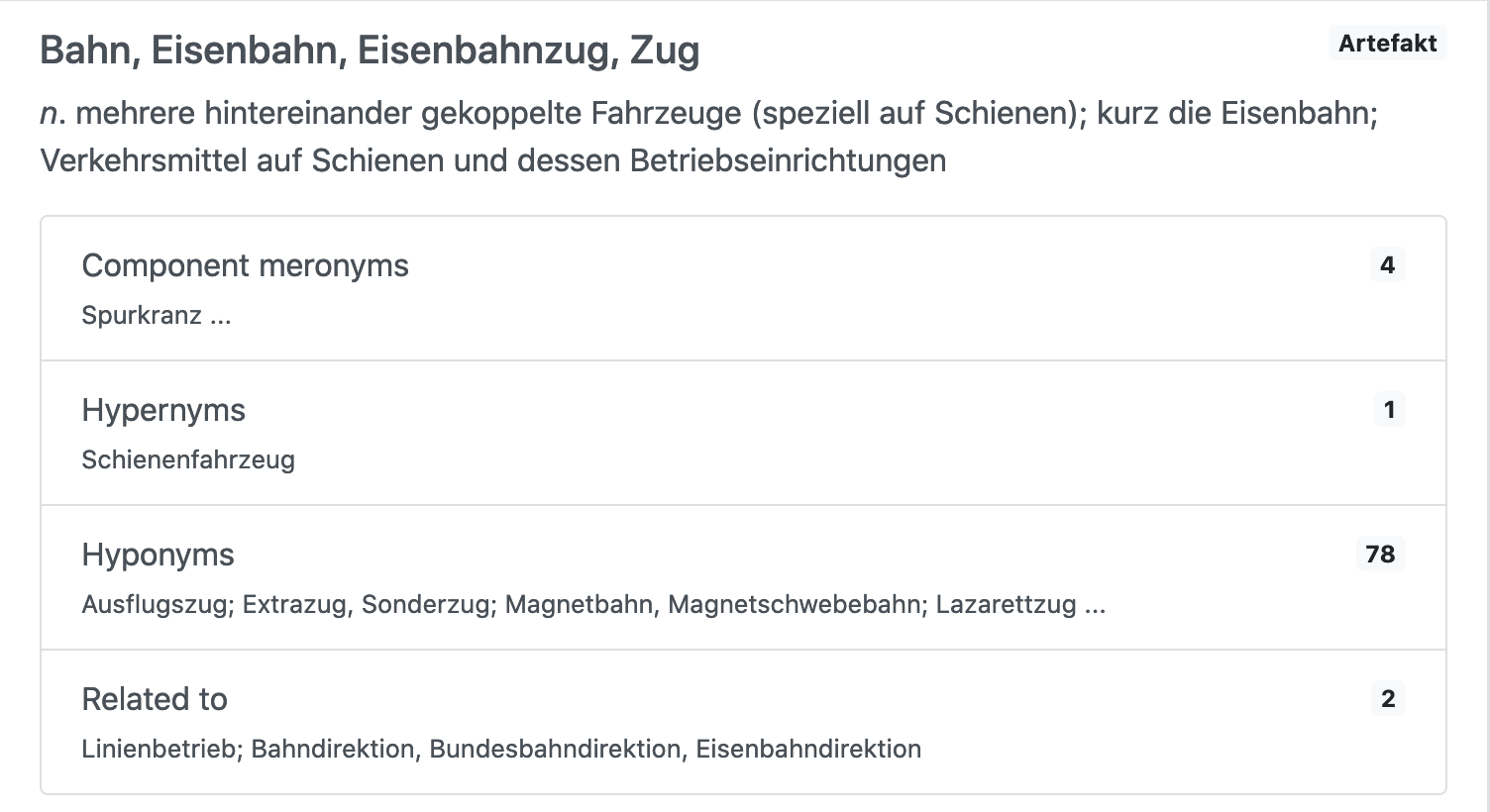
Selecting a synset displays details about its conceptual relations:
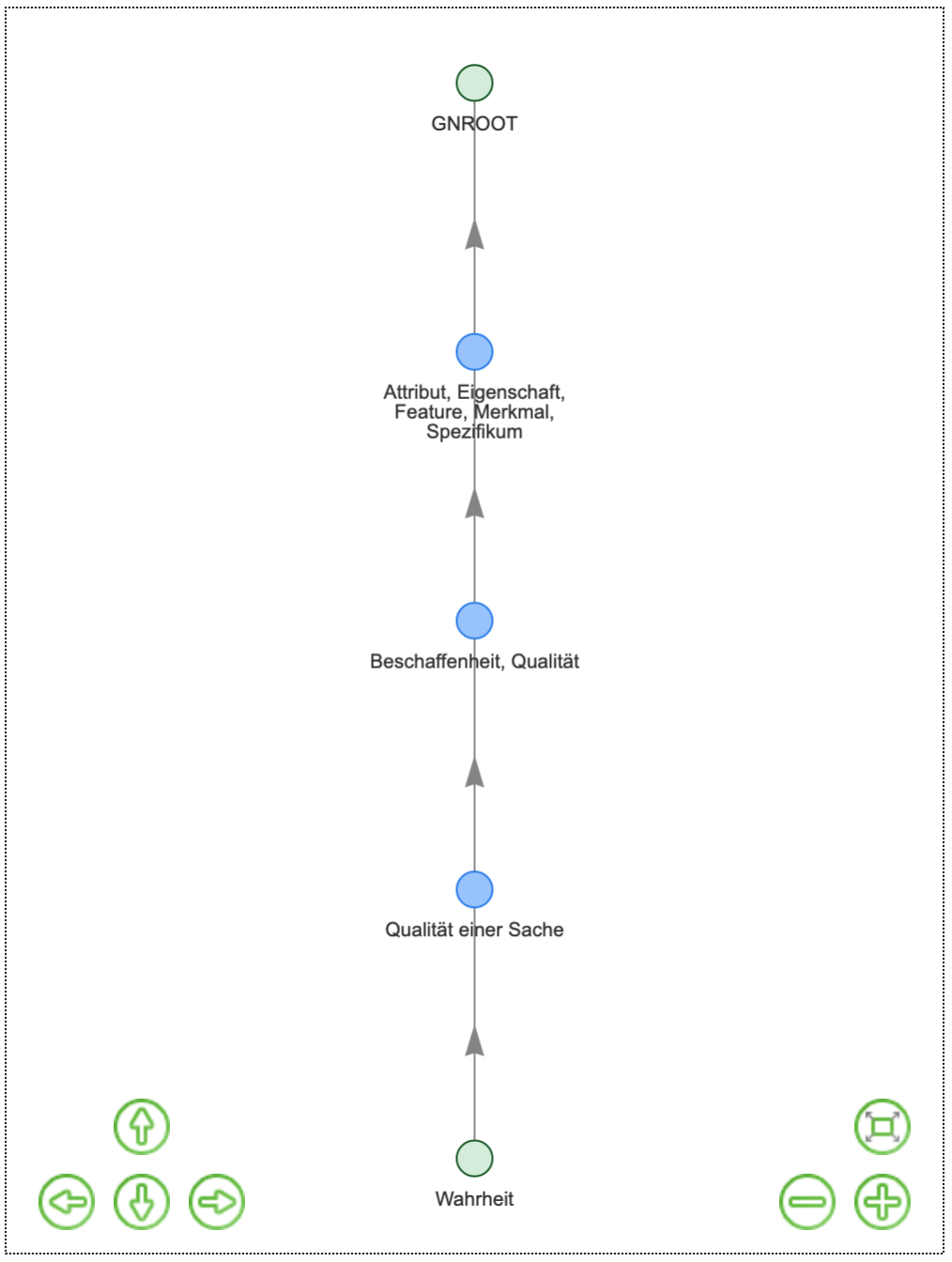
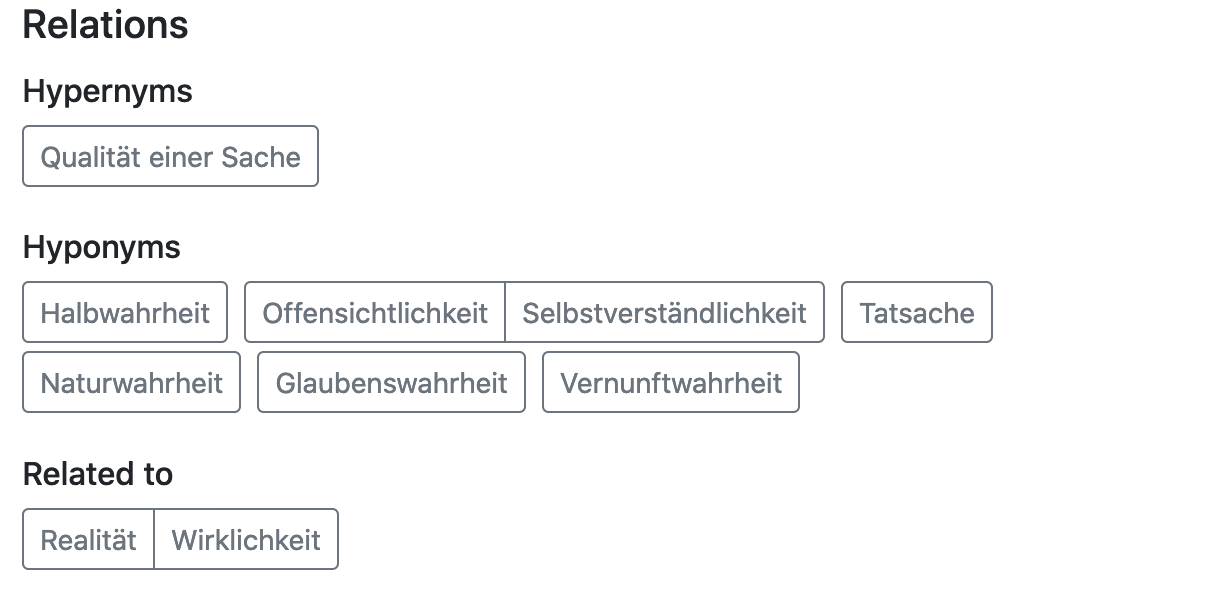
More details about the words in the selected synset:
Rover supports six graph-based measures of semantic relatedness between pairs of synsets:
Simple Path calculates the length of the path between two synsets via the hypernym relation, relative to the length of the longest such path in GermaNet
Wu and Palmer (1994)
Leacock and Chodorow (1998)
Resnik (1999)
Lin (1998)
Jiang and Conrath (1997)
Interactively select a pair of synsets and see the results of relatedness measures:

Once a pair of synsets is selected, Visualize Relatedness displays:

Batch Processing performs relatedness calculations on larger datasets:
Try Rover at: https://weblicht.sfs.uni-tuebingen.de/rover/
Send questions, comments, and suggestions for improvement to: germanet-feedback@sfs.uni-tuebingen.de
Jiang and Conrath (1997). Semantic Similarity Based on Corpus Statistics and Lexical Taxonomy. In Proceedings of the 10th Research on Computational Linguistics International Conference, 19–33. Taipei, Taiwan: The Association for Computational Linguistics and Chinese Language Processing
Leacock and Chodorow (1998). ‘Combining Local Context and WordNet Similarity for Word Sense Identification’. In WordNet: An Electronic Lexical Database. MIT Press.
Lin (1998). ‘An Information-Theoretic Definition of Similarity’. In Proceedings of the Fifteenth International Conference on Machine Learning, 296–304. San Francisco, CA, USA: Morgan Kaufmann Publishers.
Resnik (1999). Semantic Similarity in a Taxonomy: An Information-Based Measure and Its Application to Problems of Ambiguity in Natural Language. Journal of Artificial Intelligence Research 11 (July): 95–130.
Wu and Palmer (1994). Verbs semantics and lexical selection. In Proceedings of the 32nd Annual Meeting on Association for Computational Linguistics, 133–138. ACL ’94. Las Cruces, New Mexico: Association for Computational Linguistics.